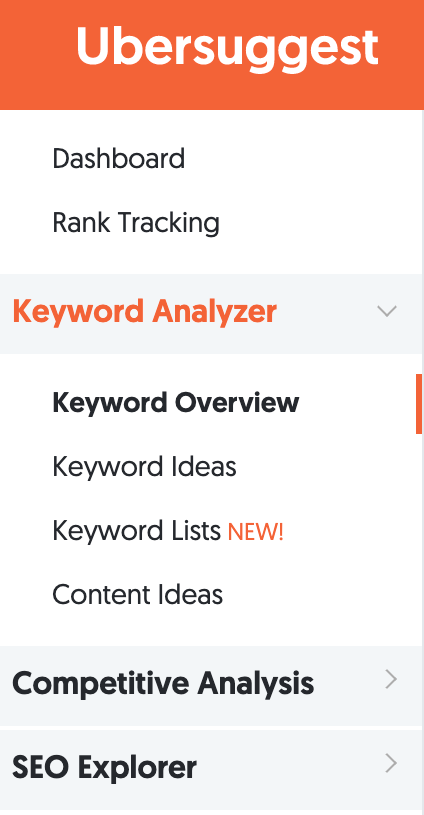All Categories
Featured
Table of Contents
- – What Is The Most Affordable Semantic Seo Deal
- – Who Is The Leading Improving Rankings With Sem...
- – A Top Improving Rankings With Semantic Seo
- – What Is The Top Semantic Seo Audits
- – Who Is The Most Trusted Semantic Markup In S...
- – Who Is The Most Reliable Semantic Seo Optimi...
- – Who Is The Top What Is Semantic Seo Company?
This is since search engines have actually developed and are moving more and a lot more in the direction of reading content on the internet. Of program, that has actually additionally changed the way we create material, especially if we desire to place far better in the search engines.
Intertwingularity is not generally recognized, individuals keep acting they can make things deeply hierarchical, categorizable and sequential when they can't. Based on the partnerships in between search intents, the search engine prefers a material in placing by determining the distance in between the vectors of definition.
It enables you to see, beginning with a subject, all the entities that relate to that topic. By doing this you can clearly see which entities/concepts/ideas have already been covered on your web site, and you can find new possibilities by understanding what content you can include and how to produce it.
What Is The Most Affordable Semantic Seo Deal
It has the ability to make your material understandable for online search engine on the one hand and for your audience on the other. Structuring your material model highlights your content and its hidden relationships so that online search engine can identify you amongst numerous pieces of details, making you extra visible to individuals that satisfy the search intent pertaining to your business.
In semantic search engine optimization copywriting, an editor begins with a wider variety of topics and tailors the web content to consist of semantically pertinent terms and expressions that aid viewers comprehend a topic, similar to reviewing material in a wiki. From a web content writing point of view, one useful means to do this is to create a vocabulary of terms and questions bordering your target subject.
Who Is The Leading Improving Rankings With Semantic Seo Company
Learn extra about by watching the by!.

Semantic search refers to the process of how search engines understand and match search phrases to a searcher's intent in natural search results page. Before semantic search, online search engine like Google operated like matchmakersaligning details words in your question with those specific words on web pages. The outcomes were simple but usually lacked depth.
A Top Improving Rankings With Semantic Seo
It makes it possible for Google to use quick, exact response to look questions about real-world topics. When you type a question word into Google, you're not just going into a series of words. You take advantage of an intricate web of significances and links. Google's Understanding Chart sees these words as entities with context and relationships.
When you look for "Apple," Google does not just see a word that explains a fruit. It identifies Apple as a firm and can offer related info. Like the name of its chief executive officer, Tim Chef, or its most current supply prices. Google introduced the Hummingbird upgrade in 2013. It was Google's response to the rise of voice searches, where questions came to be extra conversational and nuanced.
What Is The Top Semantic Seo Audits
By integrating NLP, Hummingbird allowed Google to relocate beyond simple keyword matching. It helped the search engine comprehend search intent, boosting the odds that results would precisely match the factor behind a customer's search. As the 3rd most crucial ranking variable after content and links, RankBrain has actually boosted Google's semantic search abilities to recognize the significance of search queries.
Making it extra effective at handling never-before-seen search queries. RankBrain considers more than just keyword phrases when assessing a search inquiry.
It brings outcomes that match the keywords and align with the overall intent of supplying pup training guidance. And if the individual regularly looks for dog-related content, Google may prioritize a lot more comprehensive training guidesrecognizing the user's recurring rate of interest in the subject. Incorporating technologies like the Knowledge Chart, Hummingbird, and RankBrain, semantic search aids the Google algorithm interpret and link data across a large web of details.
Who Is The Most Trusted Semantic Markup In Seo Provider In My Area
The emphasis shifts from keyword selection to an all natural approach including individual intent, topical relevance, and overall user experience. Creating content that resolves the searcher's needs with thorough info can boost your SERP rankings.
And sort of web content can best satisfy their requirements. A more comprehensive method to material aligns better with semantic search's shift away from exact keyword phrase matching and toward customer intent. Which discusses the increased concentrate on subject clusters, as opposed to private key phrases. Web content that covers search inquiries extra extensively not only pleases customers.
And 5 times more than websites that take 10 secs to tons. While technological SEO makes certain ideal site efficiency and accessibility, concentrating on individual experience (UX) takes it an action further. UX aims to create an aesthetically appealing, user-friendly user interface with appealing, top quality material that motivates visitors to remain. Semantic search innovation makes it possible for internet search engine to intend for outcomes that supply the very best feasible UX.
Who Is The Most Reliable Semantic Seo Optimization Tools Service

All display Google's ability to resolve a subject inquiry comprehensively. By comprehending the context and intent behind individual inquiries, internet search engine can supply a lot more appropriate info and potentially enhance customer engagement. Personalization in search results page creates much better UX.Based on your previous search background and choices as a user, semantic search helps online search engine customize the outcomes to suit your one-of-a-kind needs and interests.
It fetches results that match the keywords and straighten with the general intent of offering puppy training advice. And if the user frequently looks for dog-related content, Google might prioritize a lot more comprehensive training guidesrecognizing the customer's ongoing interest in the subject. Integrating modern technologies like the Expertise Graph, Hummingbird, and RankBrain, semantic search aids the Google algorithm analyze and connect data across a vast internet of info.
Who Is The Top What Is Semantic Seo Company?
The focus changes from keyword selection to an alternative strategy including customer intent, topical importance, and overall individual experience. Creating material that attends to the searcher's needs with thorough information can improve your SERP positions. Listed below, we lay out the fads and techniques that consolidate the demand for semantically educated content. Later on, we give workable tips to transform these understandings into best techniques.

A broader approach to material aligns much better with semantic search's shift away from specific keyword phrase matching and toward user intent. Material that covers search queries more thoroughly not just satisfies customers.
And five times higher than websites that take 10 seconds to lots. While technical search engine optimization makes certain ideal internet site performance and ease of access, concentrating on user experience (UX) takes it a step further. UX aims to create an aesthetically attractive, user-friendly user interface with interesting, quality content that encourages site visitors to stay. Semantic search technology allows online search engine to aim for results that provide the very best feasible UX.
All display Google's capability to address a topic question thoroughly. By comprehending the context and intent behind customer inquiries, online search engine can supply much more relevant information and possibly increase individual engagement. Personalization in search results page makes for better UX.Based on your past search history and choices as a user, semantic search helps search engines customize the results to fit your unique needs and rate of interests.
Table of Contents
- – What Is The Most Affordable Semantic Seo Deal
- – Who Is The Leading Improving Rankings With Sem...
- – A Top Improving Rankings With Semantic Seo
- – What Is The Top Semantic Seo Audits
- – Who Is The Most Trusted Semantic Markup In S...
- – Who Is The Most Reliable Semantic Seo Optimi...
- – Who Is The Top What Is Semantic Seo Company?
Latest Posts
What Is The Premier Tools For Semantic Seo Company
What Is The Top Best Semantic Seo Tools
Top Semantic Seo Guide Dealer Near Me
More
Latest Posts
What Is The Premier Tools For Semantic Seo Company
What Is The Top Best Semantic Seo Tools
Top Semantic Seo Guide Dealer Near Me